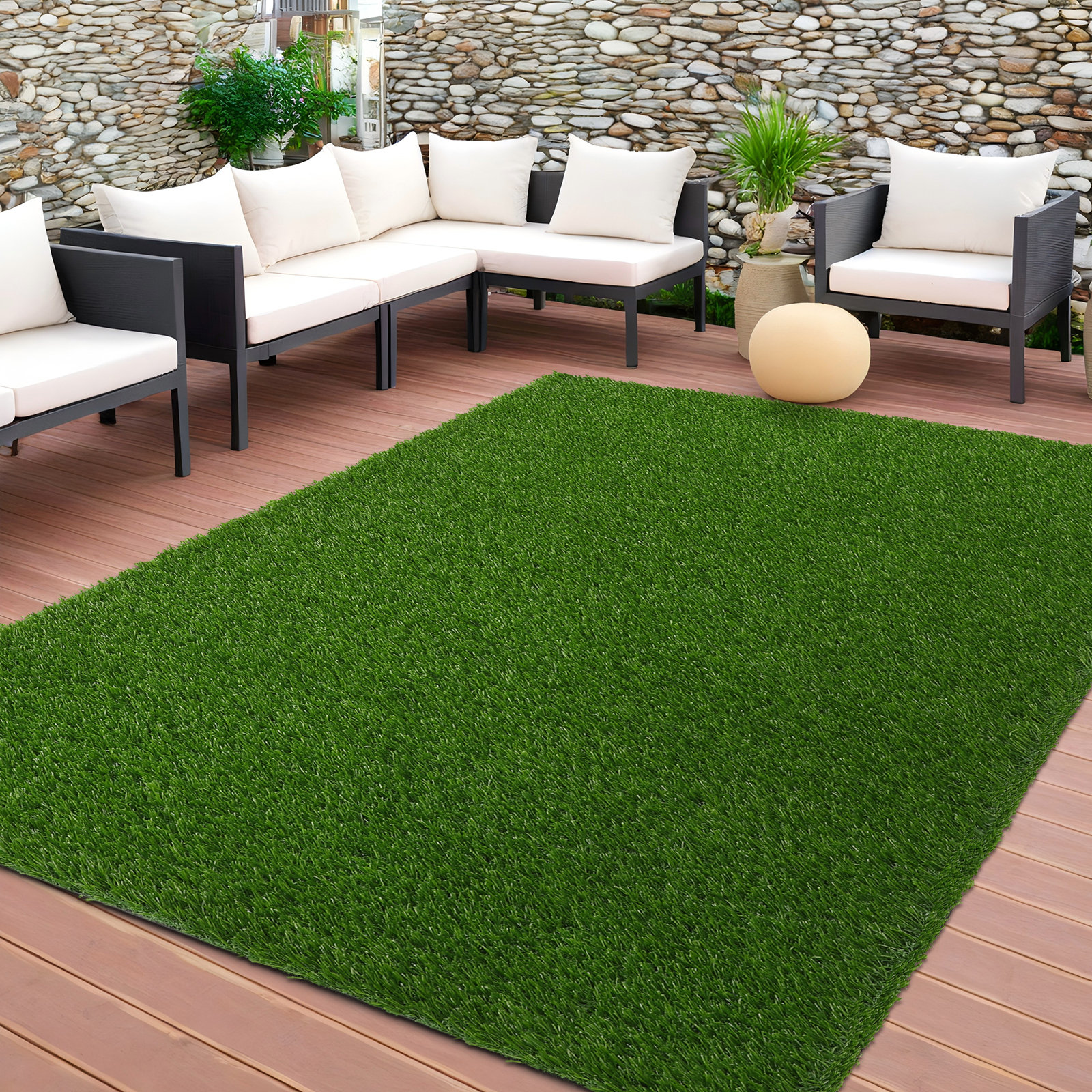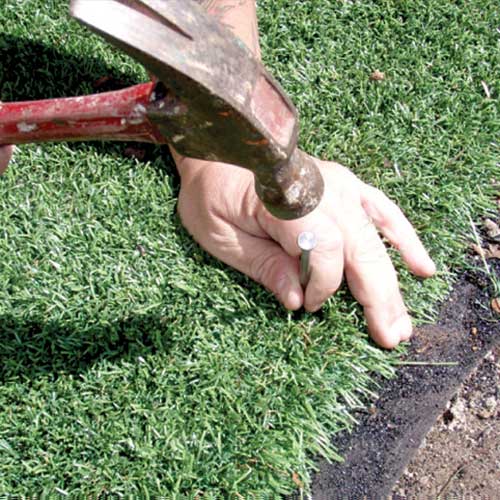Long-Lasting Arizona Artificial Turf for Residential and Commercial Applications
Long-Lasting Arizona Artificial Turf for Residential and Commercial Applications
Blog Article
Delve Into the Environmental Perks of Opting for Synthetic Grass Solutions
The adoption of man-made grass options provides a compelling opportunity to attend to pressing environmental obstacles. By dramatically decreasing water use and reducing the application of damaging chemicals, these options not only advertise lasting landscape design yet additionally protect local ecological communities. The reduced carbon footprint connected with lowered maintenance activities adds to an extra sustainable method to land administration. The effects of these benefits expand beyond mere conservation initiatives, increasing questions concerning their lasting effect on habitat preservation and overall environmental equilibrium. Discovering these measurements exposes an intricate interaction worth thinking about.
Water Conservation Advantages
Among one of the most considerable advantages of synthetic grass is its capability to preserve water. Traditional lawn lawns call for substantial irrigation, particularly in locations prone to dry spell or water restrictions. On the other hand, synthetic lawn does not need watering, significantly decreasing the total need for water resources. This function is particularly helpful in arid regions where water shortage is a pressing problem.
By removing the demand for regular watering, synthetic grass adds to sustainable landscape methods and helps minimize the environmental effect of excessive water consumption. Additionally, the preservation of water encompasses the reduction of runoff, which can result in dirt erosion and river contamination.
Additionally, the setup of artificial turf allows home owners and districts to assign water sources much more efficiently, concentrating on vital usages such as drinking water and agriculture. The change in the direction of synthetic grass not just advertises responsible water usage but likewise straightens with more comprehensive ecological goals aimed at preserving natural deposits.
As areas progressively prioritize sustainability, the water preservation benefits of man-made turf offer a compelling instance for its adoption in industrial and residential landscape design jobs.
Lowered Chemical Usage
The transition to man-made grass considerably lowers the dependence on chemical treatments generally made use of in all-natural lawn upkeep. Standard grass management commonly entails the application of herbicides, chemicals, and plant foods to promote development and control bugs. These chemicals can position threats to human health, local wildlife, and the environment, contributing to dirt and water contamination.
On the other hand, synthetic grass gets rid of the demand for these dangerous substances. Once installed, it needs minimal upkeep, largely including normal cleansing and occasional infill replenishment. This decrease in chemical usage not just profits the immediate environment but likewise adds to broader ecological security. By decreasing the launch of artificial compounds into the community, man-made grass promotes healthier dirt and water supply.
Furthermore, the absence of chemical runoff linked with synthetic lawn installations helps secure regional waterways from contamination, sustaining marine life and preserving biodiversity. Phoenix turf companies. As neighborhoods increasingly focus on lasting techniques, selecting synthetic grass presents a feasible remedy that lines up with ecological conservation goals. With this change, building proprietors can enjoy lush eco-friendly spaces without endangering eco-friendly wellness, paving the method for a more lasting future
Lower Carbon Footprint

Additionally, the installment of fabricated turf can result in significant water conservation. All-natural lawns call for significant quantities of water for irrigation, which not only contributes to the carbon footprint related to water extraction and treatment yet likewise strains neighborhood water resources. In contrast, man-made lawn requires very little upkeep, needing no watering, consequently considerably lowering water usage and its connected energy costs.
Furthermore, the longevity of synthetic grass adds to its reduced carbon impact. With a life expectancy of as much as 15 years or even more, the need for regular replacements is lessened, causing much less waste and lower energy intake in production and throwing away standard yard options. In general, fabricated grass offers a lasting option for eco aware landscape design.
Environment Preservation
Habitat preservation is a crucial consideration in the discussion over landscaping options, particularly when comparing synthetic turf to natural grass. Natural lawn yards commonly need extensive maintenance, consisting of making use of herbicides, fertilizers, and chemicals, which can adversely affect local ecosystems. These chemicals can leach into the dirt and waterways, harming native plants and animals and disrupting local habitats.
Man-made turf gets rid of the need for dangerous chemicals, thus protecting nearby wild animals and preserving the honesty of surrounding ecosystems. The installation of synthetic grass can lead to the conversion of former lawn areas visit this site right into more biodiverse landscapes, such as pollinator gardens or native plant areas, which can support regional wildlife.
Inevitably, the transition to synthetic grass not just saves water and decreases maintenance efforts but likewise fosters a more unified partnership between human activities and the natural environment, promoting environment preservation while doing so.
Long-Term Sustainability
Long-term sustainability is a crucial variable in examining the advantages of synthetic grass over traditional lawn lawns. Among the most considerable benefits of synthetic grass is its durability; it can last approximately 15-20 years with very little upkeep, whereas all-natural grass calls for regular reseeding and replacement. This longevity minimizes the demand for consistent resources, such as water, fertilizers, and chemicals, which are vital for keeping a healthy grass yard.
In addition, synthetic grass adds to a decrease in carbon emissions related to lawn care equipment. Typical lawns usually need gas-powered mowers, trimmers, and blowers, every one of which add to air pollution. read more Arizona artificial turf. On the other hand, synthetic grass gets rid of the requirement for such equipment, advertising a cleaner setting
Furthermore, the manufacturing of man-made lawn significantly utilizes recycled materials, enhancing its sustainability profile. As manufacturers embrace environment-friendly methods, the ecological impact of synthetic grass remains to decrease.

Verdict
The fostering of man-made lawn options offers considerable environmental advantages, consisting of substantial water preservation, reduced reliance on unsafe chemicals, and a lower carbon impact. Moreover, synthetic grass aids in protecting all-natural habitats by decreasing land disruption and advertising long-term sustainability via the usage of sturdy products. Collectively, these elements emphasize the possibility of synthetic grass to add favorably to ecological health and offer a viable choice to traditional landscaping techniques in a significantly resource-conscious world.
In comparison, artificial grass does not require watering, considerably decreasing the general need for water sources. By decreasing the launch of artificial compounds into the community, artificial turf advertises much healthier dirt and water systems.
Moreover, the installment of synthetic turf can result in considerable water preservation. In comparison, man-made lawn needs very little upkeep, needing no watering, therefore dramatically reducing water use and its connected power expenses.

Report this page